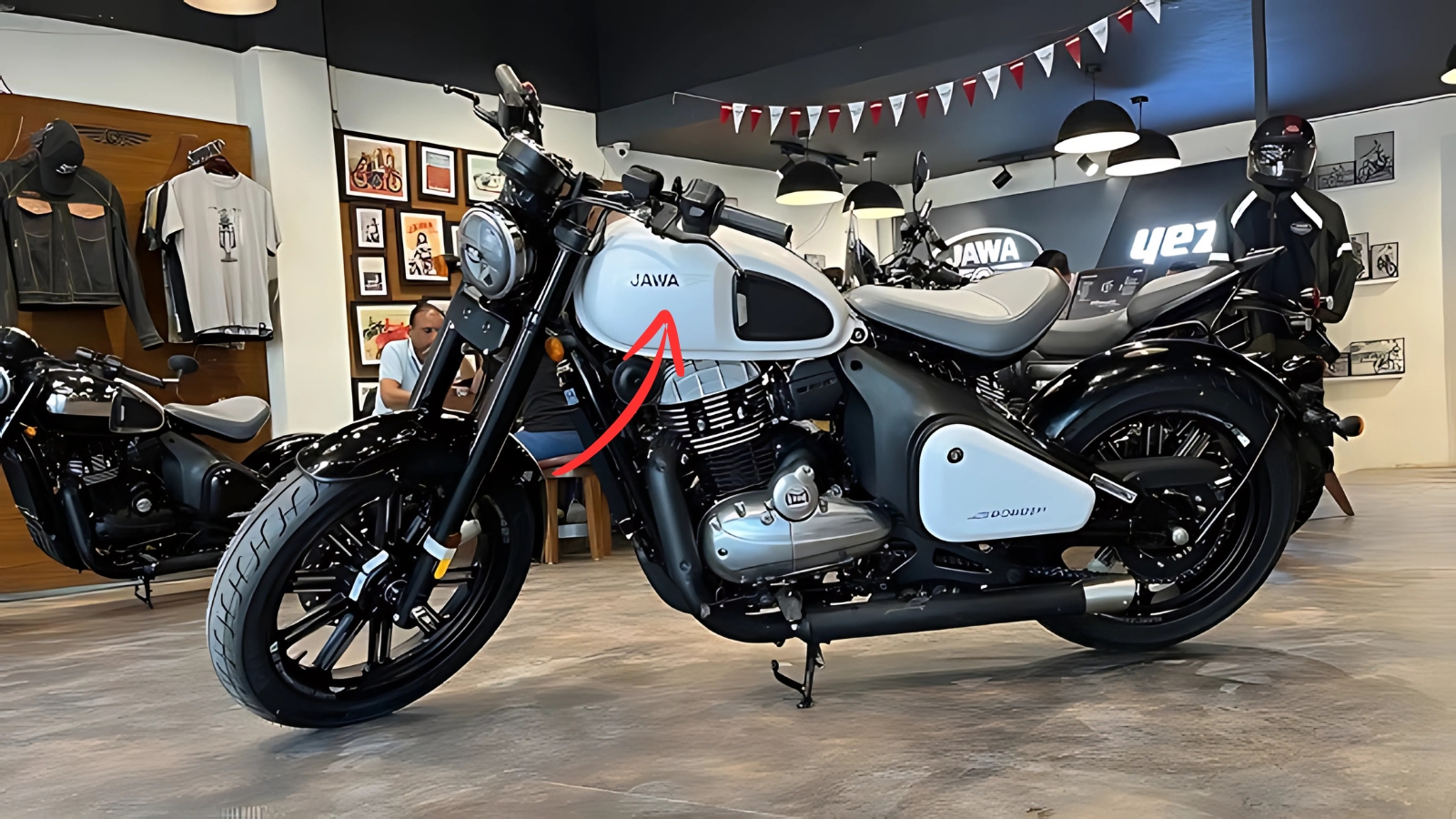Jawa 42 Bobber: The rumble of engines and scent of leather filled the air yesterday as Jawa Motorcycles pulled the covers off its latest creation – the 42 Bobber – at a gritty industrial venue on the outskirts of Prague. The machine represents the storied brand’s most accessible entry into the increasingly popular bobber segment, blending vintage aesthetics with contemporary engineering in a package aimed at both nostalgic enthusiasts and younger riders seeking distinctive styling.
Design Philosophy Embraces Minimalist Ethos
Standing beside the gleaming motorcycle, Jawa’s Design Director Karel Novák gestured toward various elements while explaining the 42 Bobber’s aesthetic approach. “We’ve stripped away everything non-essential,” he remarked, occasionally raising his voice over the ambient music. “This is about honest motorcycling – no pretense, no unnecessary frills.”
Indeed, the 42 Bobber embraces the stripped-down philosophy that defines the category. The solo saddle sits low at just 740mm, mounted atop a visually floating rear fender that emphasizes the hardtail look despite the presence of hidden rear suspension. Up front, a chunky fork assembly with gaiters evokes vintage racing machinery, while bar-end mirrors and minimal instrumentation maintain the uncluttered theme.
Available in three colorways – Mystic Copper, Moonstone White, and the signature Jawa Maroon – each variant features distinctive pinstriping applied by hand at the company’s revitalized Týnec nad Sázavou factory.
Engineering Balances Character with Usability
Beneath its nostalgic styling, the 42 Bobber houses thoroughly modern mechanicals based on the company’s proven 42 platform. Power comes from a 334cc single-cylinder engine producing 30.64PS and 32.74Nm of torque – figures that prioritize accessible low-end grunt over outright performance.
“We’ve retuned the engine specifically for this application,” explained Chief Engineer Jakub Svoboda, occasionally tapping the cylinder head for emphasis. “The torque curve peaks lower in the rev range compared to our standard models, delivering the kind of character riders expect from a proper bobber.”
The engine breathes through a redesigned intake system and exhales via a slash-cut exhaust that produces a distinctively throaty note without crossing into obnoxious territory. Mechanical refinements include a heavier flywheel for improved low-speed manners and a revised clutch assembly that reduces lever effort by approximately 25 percent.
Chassis Modifications Emphasize Authentic Experience
The 42 Bobber’s frame represents a significant departure from its siblings, with extensive modifications to achieve the distinctive stance. The steering head angle increases to 31 degrees (from 27.5 degrees on standard models), extending wheelbase to 1485mm for enhanced stability and visual presence.
“Finding the right balance between authentic bobber geometry and everyday usability proved challenging,” admitted Suspension Development Lead Martin Kovář, occasionally running his hand through his salt-and-pepper beard. “We tested countless iterations before settling on this configuration.”
Front suspension utilizes conventional 41mm telescopic forks offering 130mm travel, while twin rear shocks provide 100mm travel with preload adjustability. Braking hardware includes a 280mm front disc gripped by a floating caliper and a 240mm rear disc, both managed by dual-channel ABS that can be deactivated for the rear wheel.
Thoughtful Details Enhance Ownership Experience
Despite its back-to-basics ethos, the 42 Bobber incorporates several thoughtful features that enhance everyday practicality. The round instrumentation pod houses an analog speedometer with integrated digital display providing essential information including fuel level, gear position, and trip computer functions.
LED lighting features throughout, including a distinctive headlamp with halo-style DRL signature. The ignition key incorporates an integrated steering lock and fuel cap release, while a discreet USB charging port hides beneath the saddle for modern connectivity needs.
“We recognize that while owners want authentic character, they also expect certain conveniences,” noted Product Planning Director Helena Králová. “The art lies in implementing these features without compromising the motorcycle’s essential nature.”
Production Strategy and Pricing Position
Perhaps most surprising is Jawa’s aggressive pricing strategy for the 42 Bobber. Starting at €5,490 for European markets (approximately $5,950), the machine undercuts many competitors by significant margins while offering comparable specification and superior fit-and-finish.
Production commences next month at the company’s recently expanded Czech facility, with European deliveries scheduled from late August. Asian markets – particularly India, where parent company Mahindra provides manufacturing support – will receive the model by October, with North American availability planned for early 2026 pending regulatory approvals.
New Suzuki Alto EV relaunch soon in Indian market with high range
Jawa 42 Bobber Market Impact and Competitive Landscape
The 42 Bobber enters an increasingly crowded segment traditionally dominated by premium brands commanding substantially higher prices. Industry analyst Martin Šimek observed, “What Jawa has accomplished here represents a genuine value proposition in a category often characterized by style-over-substance offerings. By delivering authentic bobber aesthetics with genuine engineering substance at accessible price points, they’ve potentially expanded the addressable market significantly.”
As urban motorcycle culture continues evolving globally and younger riders seek alternatives to homogeneous mainstream offerings, machines like the 42 Bobber that balance distinctive character with everyday usability appear well-positioned to capture growing market share from both established enthusiasts and newcomers alike.

